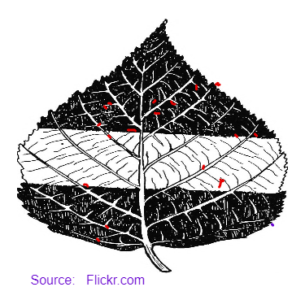This page contains the AQA GCSE Biology B9 RESPIRATION Questions and kerboodle answers for revision and understanding . This page also contains the link to the notes and video for the revision of this topic.
Banner 1 B9.1 Aerobic Respiration AQA GCSE BIOLOGY B9 RESPIRATION Kerboodle Answers : Page No.135
- 1 a The word equation for aerobic respiration is Glucose + oxygen = Carbon dioxide + Water (Energy transferred to the environment)
b The symbol equation for aerobic respiration is
C6H12O6 + 6O2 6CO2 + 6H2O
c The muscle cells have many mitochondria while fat cells have very few because the main function of the mitochondria is to produce ATP (energy). Muscle cells do a lot more work than fat cells, so they’re going to need more ATP and therefore more mitochondria as well.Muscle cells use energy rapidly in order to contract, while fat cells just sit there storing energy and only release energy slowly..
a The three main uses of the energy transferred in your body during aerobic respiration.
- To break down larger molecules to smaller ones
- To make muscles contract. All muscular activities require energy.
- To convert sugars, nitrates, and other nutrients into amino acids, which are then built up into proteins.
2 Starvation of the body is due to not getting enough of proper nutrients. It can occur from eating too many empty calories or from not eating enough healthy foods. Eating empty calories most of the day or for days in a row
Banner 2 B 9.2 The response to exercise AQA GCSE BIOLOGY B9 RESPIRATION Kerboodle Answers : Page No. 137
1 a The effect of exercise on the:
i heart rate of a fit person :Heart rate of a fit person increases and the arteries supplying blood to your muscles dilate (widen). These changes increase the flow of oxygenated blood I to your exercising muscles.
This in turn increases the rate of supply of oxygen and glucose for the increased cellular respiration rate needed. It also increases the rate that carbon dioxide is removed from the muscles.
ii breathing rate of a fit person :Breathing rate increases and you breathe more deeply. This means you breathe more often and also bring more air into your lungs each time you breathe in.
The rate at which oxygen is brought into your body and picked up by your red blood cells is increased, and this oxygen is carried to your exercising muscles. It also means that carbon dioxide can be removed more quickly from the blood in the lungs and breathed out.
2 The function of glycogen:In animals and humans, glycogen is found mainly in muscle and liver cells. Glycogen is synthesized from glucose when blood glucose levels are high, and serves as a ready source of glucose for tissues throughout the body when blood glucose levels decline.
b Muscles contain a store of glycogen but most other tissues of the body do not because In humans, 80% of the glycogen is stored in skeletal muscles, simply because skeletal muscles account for 40–50% of body weight in healthy young men and the glycogen concentration is 80–150 mmol kg ww−1.The liver has a higher glycogen concentration, but as the liver is much smaller and the total amount of liver glycogen is -100 g. Other tissue, like the heart and brain contains minor glycogen stores with important physiological function.
Banner 3 B 9.3 Anaerobic respiration AQA GCSE BIOLOGY B9 RESPIRATION Kerboodle Answers : Page No. 139
.1 If you exercise very hard or for a long time, your muscles begin to ache and do not work effectively because using muscle fibres vigorously for a long time can make them
become fatigued and they stop contracting efficiently. One cause of
this muscle fatigue is the build-up of lactic acid, produced by anaerobic
respiration in the muscle cells. The build up of lactic acid in the muscles as
a result of anaerobic respiration creates an oxygen debt.
2 Anaerobic respiration is the process of producing cellular energy without oxygen. It is used when there is not enough oxygen for aerobic respiration
b Anaerobic respiration differs between animals, plants, and yeast. The benefits are as follows:When plant cells respire anaerobically they do not form lactic acid- they form ethanol and carbon dioxide. Some microorganisms form lactic acid during anaerobic respiration-the bacteria used to form yoghurts, for example. Other microorganisms, including yeast, form ethanol and carbon dioxide. Anaerobic respiration in yeast cells is known as fermentation. It is used globally in the manufacture of bread and alcoholic drinks.
c The word equation for anaerobic respiration in animals, plants, and yeast is
glucose ethanol + carbon dioxide (energy transferred to the environment)3 If we exercise vigorously,we often puff and pant for some time after you stop becauseThe length of time you remain out of breath depends on how fit you are. The waste lactic acid you produce during anaerobic respiration is a problem.
You cannot simply get rid of lactic acid by breathing it out as you can with
carbon dioxide. As a result, when the exercise is over, lactic acid has to be
broken down to produce carbon dioxide and water. This needs oxygen.
The amount of oxygen needed to break down the lactic acid to carbon
dioxide and water is known as the oxygen debt. After a race, your heart
rate and breathing rate stay high to supply the extra oxygen needed to
pay off the oxygen debt. The bigger the debt (the larger the amount of
lactic acid), the longer you will puff and pant.
Banner 4 B 9.4 Metabolism and the liver AQA GCSE BIOLOGY B9 RESPIRATION Kerboodle Answers : Page No. 141
1 The metabolism of an organism is the sum of all the reactions that take place in a cell or in the body.
2 Four examples of metabolic reactions in the body are
- the conversion of glucose to starch, glycogen, and cellulose
- the formation of lipid molecules from a molecule of glycerol and
- three fatty acid molecules
- the use of glucose and nitrate ions to form amino acids that are then
used to make proteins
- the reactions of respiration
3 The liver is an organ of respiration because Liver is a large reddish-brown organ that carries out many different
functions in your body. One important role of the liver is in dealing with the lactic acid produced by the muscles during anaerobic respiration. Blood flowing through the muscles transports the lactic acid to the liver where it is converted back into glucose. The oxygen debt is repaid once the lactic acid has been converted back to glucose and the glucose has been completely broken down in aerobic respiration to form carbon dioxide and water. If it isn’t needed, the glucose made from the lactic acid may be converted to glycogen and stored in the liver until it is needed.
Banner 5 AQA GCSE BIOLOGY B9 Respiration Summary questions : Kerboodle answer Page No. 142
1 a Graph plotted after analyzing the results
b After looking at the results in flask A containing the live, soaked peas we can observe that peas started growing and respiration switched to aerobic. Less energy is now transferred to environment by warming them, thus flask temperature increased.
c Results in flask B the same as the room temperature readings because the peas are dry and there is no respiration, no exchange of energy so the temperature will not affect.
D The room temperature in the lab recorded every day because alterations in flask temperature are linked to change in room temperature.
e i The temperature at 20°C for the first five days because the peas were dead and there is no respiration at all, so no increase in temperature.
ii After five days the temperature increases because of anomalous respiration of mould which grows on peas.
2. a Displaying the data in bar charts.
b i When fitness is good heart, it pumps more volume of blood in each beat and if the person is resting it will beat more slowly.
ii A fit person lung are bigger and the efficiency is very much.
3 a when oxygen is used to breakdown the glucose to release energy from cell is called aerobic respiration.
b When glucose is breakdown in absence of oxygen releasing less energy. Lactic acid is the final product.
c Anaerobic respiration differs between a human and a yeast cell as waste product of anaerobic respiration in humans is lactic acid but in yeast the waste products are ethanol and carbon dioxide.
d Quantity of oxygen needed to convert lactic acid to carbon dioxide and water is called oxygen debt.
e There is a large difference in the responses of a fit and an unfit individual to exercise in terms of their muscles, heart and lung function, and oxygen debt. Capacity of lungs and heart of a fit individual is higher than unfit person. Healthy person’s lungs can bring more oxygen into the body and pumps high amount of oxygenated blood in body with each breath or heartbeat than unhealthy individual. Muscles of a fit person are larger and bigger, thus contraction is more. Oxygen debt is less for fit persons as they are able to convert lactic acid to carbon dioxide swiftly.
4 a Athletes want to be able to use their muscles aerobically for as long as possible because respiration in presence of oxygen releases more energy and muscles can contract more efficiently before swapping to less efficient anaerobic respiration.
b Developing more red blood cells by training at altitude help athletic performance because RBCs supply blood to body parts. If there are more RBCs, there will be longer supply of oxygen for respiration.
c Blood doping help performance because It increases RBCs in body just before performance permitting more oxygen to be carried to working muscles and lengthening efficient aerobic respiration.
d If the body cannot supply glucose and oxygen quickly enough when they are working hard muscles start respiration without oxygen in which glucose broken down to form lactic acid which is less efficient and cause muscle fatigue quickly.
Baneer 6 AQA GCSE BIOLOGY B9 Respiration Practice questions : kerboodle answer Page No. 143
01.1 Aaerobic respiration is an exothermic process.
01.2 In mitochondrion of a cell does aerobic respiration take place.
02 Glycogen is stored in the liver. Stored glycogen can provide glucose to respiring cells in a different part of the body as follow:
Glycogen is broken down into glucose. Glucose diffuses / moves from liver cells into the blood. Blood transports dissolved glucose. Blood diffuses /moves from blood into respiring cells
03 Muscle cells can respire aerobically and anaerobically. Comparison of these two types of respiration in human muscle cells as follows
Similarities:
• Both use glucose
• Both release energy
• Both exothermic
Differences:
Aerobic respiration:
• Uses oxygen (and anaerobic respiration does not)
• Produces water (and anaerobic respiration does not)
• Produces carbon dioxide (and anaerobic respiration does not)
• Releases more energy than anaerobic respiration
• Occurs in the mitochondria (and in anaerobic respiration it does not)
• Does not produce lactic acid (and anaerobic respiration does)
04 Yeast cells can respire anaerobically.
04.1 Fermentation is called anaerobic respiration in yeast cells .
04.2 To prevent oxygen entering a layer of oil was put on top of the yeast and sugar solution.
04.3 The piece of apparatus labelled A is Gas syringe
04.4 The flask was left in the water bath for 15 minutes before apparatus A was connected. So the contents would reach the correct temperature
04.5
04.6 The rate of anaerobic respiration over the 20 minutes is 4.1 (cm3 / min)
04.7 The results would be different if the investigation was done at 65°C because very little gas produced (because) enzymes (in yeast cells) would be denatured
04.8 Two ways anaerobic respiration in yeast is of economic importance to humans are Bread making and Making alcoholic drinks
Banner 7
DISCLAIMER
Disclaimer: I have tried by level best to provide the answers and video explanations to the best of my knowledge. All the answers and notes are written by me and if there is any similarity in the content then it is purely coincidental. But this is not an alternative to the textbook. You should cover the specification or the textbook thoroughly. This is the quick revision to help you cover the gist of everything. In case you spot any errors then do let us know and we will rectify it. References: BBC Bitesize AQA GCSE Science Kerboodle textbook Wikipedia Wikimedia Commons Join Our Free Facebook Group : Get A* in GCSE and A LEVEL Science and Maths by Mahima Laroyia: https://www.facebook.com/groups/expertguidance.co.uk/ For Free Tips, advice and Maths and Science Help
This page contains the detailed and easy notes for AQA GCSE Biology Bioenergetic for revision and understanding Bioenergetic.
Banner 1
AQA GCSE Paper 1: Complete Revision Summary
BIOENERGETIC
4.1 BIOENERGETIC
- Photosynthesis
- Factors affecting photosynthesis
- How plants use glucose
- Greenhouses
- Respiration
Banner 2
PHOTOSYNTHESIS
It is the process by which green plants prepare their own food by using water, carbon dioxide in presence of sunlight to form glucose and oxygen.

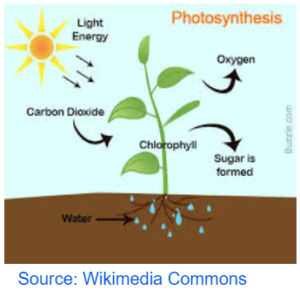
- Only leaves can photosynthesize as they have chloroplast which contains chlorophyll.
- Chlorophyll is the green pigment that traps light for the leaves and helps them to photosynthesis.
- Photosynthesis is ENDOTHERMIC
- Endothermic as it takes in heat from the sunlight.
- The energy released in making glucose and oxygen is less than the energy required to break the bonds of carbon dioxide and water.
LEAF ADAPTATIONS FOR PHOTOSYNTHESIS
Mesophyll – Photosynthetic cells lies parallel to the surface to absorb maximum light and are closed to the stomata for quick diffusion of gases.
Chloroplast – They have chloroplast which contains chlorophyll and traps light for photosynthesis
Guard cell – They have stomata which are the pores for gas exchange
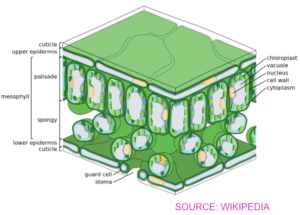
FACTORS AFFECTING PHOTOSYNTHESIS
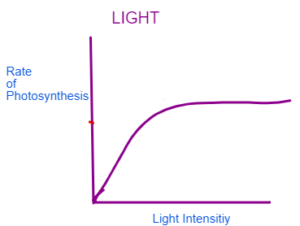
- As the light intensity increases the rate of photosynthesis increases and then it levels off.
- Initially the rate increases an€ then it has no effect as at that point other factors become limiting.
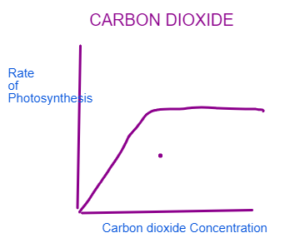
- As the light intensity increases the rate of photosynthesis increases and then it levels off.
- Initially the rate increases and then it has no effect as at that point other factors become limiting
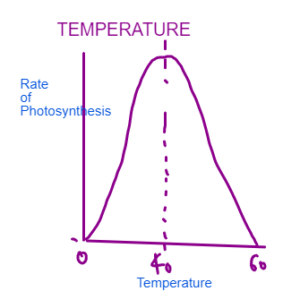
- As the temperature increases the rate increases as the particles gain kinetic energy and moves faster causing greater collision and increase reaction rate.
- Beyond optimum the rate decreases as at the higher temperature the enzymes get denatured. The enzyme changes shape and is not functions if the shape changes
Banner 3
LAW OF LIMITING FACTORS
- The factor that limits the rate OF photosynthesis
- Limiting factor is that factor that is present in a least amount than required and affect the rate of photosynthesis.
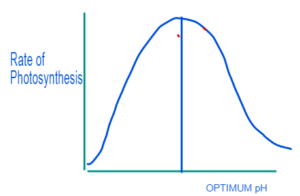
As the pH increases the rate increases upto optimum. Beyond optimum the rate decreases as enzymes get denatured.
Measuring Photosynthesis
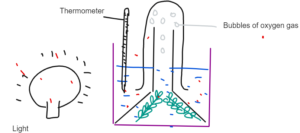
FATE OF GLUCOSE
- Glucose is soluble in water and if present longer will disturb osmotic balance of the cell Starch is complex molecule which is insoluble and can store large amount of glucose.
- Also starch being insoluble does not disturb the osmotic balance of the cell.
GLUCOSE
- Principle source of energy.
- It broken down during respiration and produces energy for the plant to grow and reproduce.
STARCH
- Excess glucose is stored in the plant as starch and is used by the plant when needed.
CELLULOSE
- Excess glucose can be converted into structural carbohydrate called Cellulose
- Cellulose is the component of the cell wall which provide shape and support to the plant.
PROTEINS
- Glucose is combined with nitrates and other mineral ions from the soil to form protein.
- Proteins are responsible for growth and also to make enzymes for metabolic reactions.
LIPIDS
- Glucose can be converted to fats and oil to serve as energy source.
- Fats and oil can form the component of the cell membrane
- They are also stored in seeds as an energy store for germination.
Banner 4
TEST FOR STARCH
- Add Iodine Solution
- If the solution turns blue black it indicates the presence of starch.
GREENHOUSE
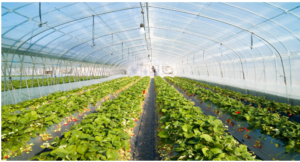
- It controls all the limiting factors to provide maximum yield of photosynthesize
- Temperature, light, carbon dioxide and other factors affecting photosynthesis are controlled and monitored.
- It works on the principle of greenhouse effect in which light is allowed to enter but is not allowed to escape thereby increasing light and temperature inside the greenhouse.
Banner 5
RESPIRATION
It is the process of breaking down food to release energy.
AEROBIC RESPIRATION
- Takes place in the presence of Oxygen
- Releases more energy and the food is completely broken down.
- Takes place in the mitochondria
- It is opposite of photosynthesis
ANAEROBIC RESPIRATION
- Takes place in absence of oxygen.
- Releases less energy and food is not completely broken down.
- Takes place in the Cytoplasm
- Glucose + Oxygen Carbon Dioxide + Water
- C6H12O6 +602 6CO2 + H2O
PLANTS
- known as fermentation
- forms ethanol and carbon-dioxide
- Glucose Ethanol + Carbon Dioxide
ANIMALS
- takes place in muscles
- Glucose Lactic Acid
Baneer 6
BREATHING AND RESPIRATION
| BREATHING | RESPIRATION |
| It is a physical process. | It is chemical process. |
| Does not involve enzyme | Involve Enzymes |
| It is breathing in oxygen and breathing out carbon dioxide | It is breaking of food in presence of oxygen for energy |
| No energy is released | Energy is released |
| Takes place outside the cells | Takes place inside the cells |
EXOTHERMIC
As it releases heat.
The energy released in making carbon dioxide and water is more than the energy taken in to break glucose and oxygen
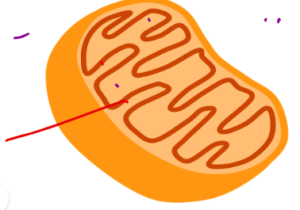
Cristae are the folding of the inner membrane of the mitochondria to increase the surface area for the attachment of the enzymes
WHY WE NEED ENERGY
MOVEMENT
- Energy is required by the muscles to contract.
- Respiration provides energy for muscle contraction.
- Muscle cells have loads of mitochondria and glycogen for efficient respiration.
TRANSPORT
- Transport of substance in an out of the cell against the concentration gradient via active transport required energy.
THERMOREGULATION
- Respiration produces heat which helps to maintain the body temperature.
CATABOLISM
- Breaking of large substances to smaller ones like digestion requires energy.
ANABOLISM
- Building of bigger molecules from smaller ones like making proteins fats and lipids from minerals ions require energy
RESPONSE TO EXERCISE
Demand for oxygen and glucose increases as more energy is needed

BREATHING RATE
- The breathing rate increases so that more oxygen is inhaled to meet the demands of oxygen by the muscles.
- Increased breathing rates also increases the rate of removal of carbon dioxide.
HEART RATE
- Increase heart rate pumps more blood to the muscles.
- Increase blood supply increases the supply of both glucose and oxygen via blood to the muscles cells.
GLYCOGENOLYSIS
- Glycogen Glucose
- Stored carbohydrates, glycogen is converted to glucose in the muscles during exercise to meet the demand for increased glucose.
WHY BREATHlNG RATE Б НОН AFTER STOPPlNG ТНЕ EXERClSE
Extra Oxygen needed by the body after exercise to recover.
OXYGEN DЕВТ*
- During Exercise the body switches to anaerobic respiration. So glucose is broken down into lactic Acid
- Glucose Lactic Acid
- The lactic acid needs to be broken down into carbon dioxide. The breathing rate is still high to get maximum oxygen to break lactic acid.
- Lactic acid + O2 CO2 + H2O
METABOLISM
It is the sum of all the reactions of the body
CATABOLISM
Breakdown reaction in which bigger molecule is broken down into smaller ones.
- a) Breakdown of glycogen
- b) Breakdown of proteins
- c) Breakdown of lipids
- d) Respiration
ANABOLISM
It is the synthesis reaction in which bigger molecule js formed from the smaller ones.
- a) Synthesis of cellulose from glucose
- b) Synthesis of starch and glycogen from glucose
- c) Synthesis of fats and lipids
- d) Synthesis of proteins
Banner 7
LIVER
DETOXIFICATION
- The alcohol or any poisonous substance taken in the body is detoxified in the liver as liver contains enzymes for detoxification
BREAKDOWN OF BLOOD CELLS
- Old and work out blood cells are broken down in liver.
BREAKDOWN OF HARMFUL SUBSTANCES FOR EXCRETION
- Excess proteins is broken down into urea in the liver which is excreted by kidney as Urine
BREAK DOWN OF LACTIC ACID
- Lactic acid produced during anaerobic respiration in the muscles is transported into the liver via blood and liver converts it into carbon dioxide and water by taking in more oxygen which is inhaled as oxygen debt.
PHOTOSYNTHESIS VERSUS RESPIRATION
| PHOTOSYNTHESIS | RESPIRATION |
| Only in plant cells | Occurs in all living cells |
| It is endothermic reaction | It is exothermic reaction. |
| Oxygen is produced | Oxygen is used up |
| Takes place in chloroplast | Takes place in Mitochondria |
| Anabolic reaction, glucose is made | Catabolic reaction, glucose is broken down. |
| Light dependent | Light independent |
Banner 8
Key Terms
Photosynthesis – It is the process by which green plants prepare their own food carbon dioxide and water are combined to form glucose and oxygen in presence of sunlight
Respiration – breakdown of food to release energy
Limiting Factors — Factor that limits the rate of photosynthesis
Endothermic Reaction— Reaction that takes in heat
Exothermic Reaction — Reaction that releases heat
Glucose — product of photosynthesis and fuel for respiration
Starch — Storage carbohydrate in plants
Glycogen — Storage carbohydrate in animals
Aerobic Respiration – Breaking down of food in presence of oxygen
Anaerboic Respiration – breaking down of food in absence of oxygen
Fermentation – Anaerobic respiration in plants that produces ethanol and carbon dioxide
Greenhouse – A glass or a plastic house to control the limiting factors and increase the rate of photosynthesis.
Metabolism – Sum Of all the catabolic and anabolic reactions of the body.
Liver – An organ involved in metabolism.
Lactic Acid — The product of anaerobic respiration in animals
Oxygen Debt —The extra oxygen needed exercise to break down lactic acid and recover to pre exercise state.
Banner 9
Disclaimer:
I have tried my level best to cover the maximum of your specification. But this is not the alternative to the textbook. You should cover the specification or the textbook thoroughly. This is the quick revision to help you cover the gist of everything. In case you spot any errors then do let us know and we will rectify it.
References:
BBC Bitesize
Wikipedia
Wikimedia Commons
Image Source:
Wikipedia
Wikimedia
Commons
Flickr
Pixabay
Make sure you have watched the above videos and are familiar with the key definations before trying these questions. It is also good to time yourself while doing these questions so that you can work on the speed as well.

